The Japan Foundation Awards 2024 Commemorative Lecture
How Japanese Arts and Cultures Make Us Happier
Aug 20, 2025
【Special Feature 084】
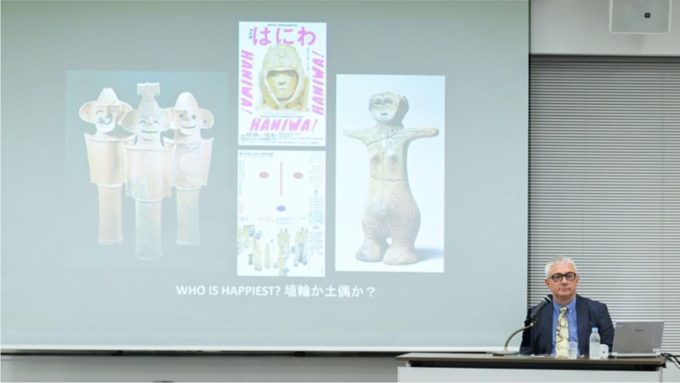
Artistic and cultural activities are essential to the human experience. Visiting art galleries and historical sites, producing artwork, and engaging with such creations all enrich our lives. This commemorative lecture was delivered by Professor. Simon Kaner, Executive Director of the Sainsbury Institute for the Study of Japanese Arts and Cultures, a research institution dedicated to the study, publication, and exchange of Japanese arts and cultures. Drawing on insights from various projects undertaken by the Institute, Professor. Kaner explored how engagement with Japanese arts and cultures can make us happy. He also shared his thoughts on how digital technologies can be leveraged to deliver what Darren Henley, Chief Executive of Arts Council England, calls the "arts dividend" to new global audiences.
The lecture is also available for you to enjoy on the Japan Foundation's official YouTube channel.
Professor Simon Kaner, Executive Director of the Sainsbury Institute for the Study of Japanese Arts and Cultures
Good evening, everybody. I am truly honoured to be here today and to accept a Japan Foundation award on behalf of all my colleagues at the Sainsbury Institute for the Study of Japanese Arts and Cultures. Although they had all hoped to join me on my trip to Japan, unfortunately that wasn't possible. However, I'm pleased to share that I'll be back in Japan in November of this year (2024) with our university president, the chair of our board, and some of my other colleagues. I sincerely hope to introduce them to as many of you as possible during that visit.
The Sainsbury Institute for the Study of Japanese Arts and Cultures was established 25 years ago. Since then, we have grown from a small operation consisting of just two people and a parrot. The parrot, sadly, is no longer with us, but we currently have a dedicated core team of around 16 staff. In addition, we're supported by a global network of hundreds of former research fellows, academic visitors, and research partners in Japan, in the UK, across Europe, and in North America. I feel hugely privileged to represent such an extraordinary group of people. I also consider myself very fortunate to be able to follow my dream of working in Japanese archaeology and art. I'd like to express my sincere gratitude to everyone at the Japan Foundation for facilitating my visit. It's been a wonderful week, and I've had the chance to reconnect with many old friends. I'm truly delighted to see so many of you here this evening, giving up your Friday night to attend my lecture. Thank you.
Now, in preparing for this visit to Japan, one of the things I struggled with most was deciding on a theme for my speech. This is because the Sainsbury Institute for the Study of Japanese Arts and Cultures covers all aspects of Japanese art and culture, from prehistory to the present--and indeed into the future. Geographically, our work spans a broad area, from Hokkaido in the north to Okinawa in the south. Therefore, it would be extremely difficult to present the full range of research topics we've covered over the last 25 years in a single lecture.
As an archaeologist, I'm used to dealing with just fragments of past realities. So this evening, I'd like to share with you just a few fragments--snapshots of some of the projects we've undertaken. I hope this will give you a sense of what we've been working on. I'd also like to briefly touch on our plans for the future.
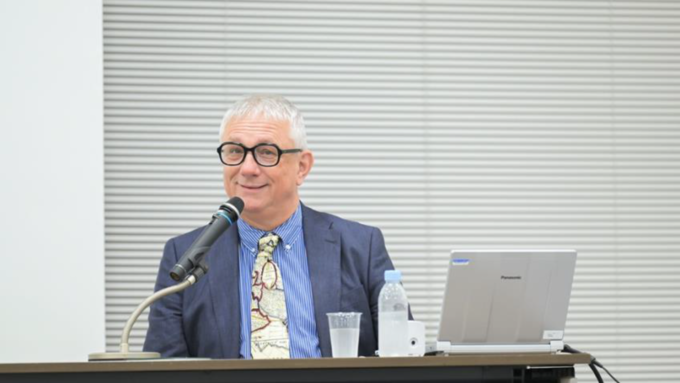
Japanese Arts and Cultures as a Means to Mental Well-Being
I first came to Japan exactly 40 years ago--which I still can't quite believe. At the time, many people--fellow students, friends, family, even my parents' friends--thought I was bonkers. I didn't know much about Japan. But I definitely wanted to learn more about the incredible archaeology I had been introduced to by my professor at the University of Cambridge, Professor Gina Lee Barnes. In a rather strange twist of fate, I worked part time on the tills (cash register) at a Sainsbury's* supermarket during my student days. In fact, it was some of the money I earned at Sainsbury's that made it possible for me to come to Japan. Back then, I had no idea where it might lead. But what I do know now is that the opportunities I've had to work in Japan have allowed me to build a deeply enjoyable and fulfilling career.
- *The Sainsbury Institute for the Study of Japanese Arts and Cultures was established with financial support from Sir Robert and Lady Lisa Sainsbury, members of the founding family of one of the UK's leading supermarket chains, Sainsbury's.
I'm now very aware that learning about or having an interest in Japan is no longer the niche, exclusive thing it was 40 years ago. I believe this is a testament to the vision of the founding benefactors of the Sainsbury Institute, Sir Robert and Lady Lisa Sainsbury; our founding director, Professor Nicole Coolidge Rousmaniere; and our earliest trustees, including Dame Elizabeth Esteve-Coll, who sadly passed away just a few weeks ago (in September 2024). At a time when Japan and Japanese art were not widely regarded in the UK, their foresight in developing a vision for the Sainsbury Institute was truly remarkable. I also know that none of what we do today would be possible without the warm support of all our friends in Japan. This includes the Japan Foundation--and in particular, Professor Kawai Masatomo, who is here with us this evening. Professor Kawai has been with the Institute since the very beginning and has provided invaluable guidance over the past 25 years.
So, I think it's fair to say that although we live in a rather troubled world, many of the students I interact with on a daily basis find that interest in and engagement with Japan brings them comfort and joy. This growing connection has fuelled a global boom in interest in Japan--its language, food, manga, cinema, arts, and culture in all its forms. With this in mind, the theme of my talk today is: How Japanese arts and cultures make us happier.
Before I start, I must apologise on behalf of all of us foreigners that this current interest in Japan has led to overtourism in some of the country's more popular tourist spots.
Through our programs at the Sainsbury Institute and at the University of East Anglia, we aim to ensure that the people who are associated with us at least have some understanding of the cultural context (of Japan) that they'll be engaging with. This is especially important because, in Britain at least, we are currently facing a serious mental health crisis--one that is affecting the younger generations in particular. Since they represent the future for all of us, I believe it's vital to consider how we can address this issue. I've also been reflecting on how our work in Japanese arts and cultures might contribute to alleviating some of these problems. By the end of my talk this evening, I hope that you'll agree that Japanese arts and cultures have a meaningful role to play in promoting mental well-being. That's why I'm especially grateful to the Japan Foundation for inviting me to speak on this important topic today.
Happiness is a Culturally Constructed Concept
At the moment, we have two fabulous exhibitions taking place in Tokyo that I've been able to see during my visit. The first opened this week (October 2024) at the Tokyo National Museum on the theme of haniwa. Among them are some very happy haniwa. Visting them will surely help cheer anybody up. The second exhibition is being held at the National Museum of Modern Art. I think it's a really interesting exhibition looking at haniwa and dogū through the eyes of modern artists. Of all the works in this exhibition, one of my favorites is a dogū with one arm raised, looking very cheerful.
So, my question for you is: Who looks happiest--the haniwa or the dogū?
However, there's a problem here, because it comes down to how we define happiness. I was discussing with Mei, who's kindly interpreting for me this evening, about how we should translate that difficult word. Fortunately, in Japanese we have katakana--so we decided to go with "happiness." That said, perhaps one of the more serious points I'd like to make in my lecture, speaking as an archaeologist and working in the field of arts and cultures, is that I believe happiness is a culturally constructed concept.
Growing Fascination with Japanese Culture in Britain
Here I'd like to show you a couple of pictures of where I come from [see video 13:07-14:35]. Many of you have visited the Sainsbury Institute for the Study of Japanese Arts and Cultures and our lovely 12th-century building in the heart of what I would argue is the finest historic city in England. Unlike in Japan, British trains are notoriously unreliable. However on a good day, you can get from London to Norwich in about two hours--on what we like to think of as our own version of the shinkansen. My dream is to one day have a maglev track running from Norwich Station straight to the Sainsbury Centre at the University of East Anglia.
This is the University of East Anglia--home to the Sainsbury Centre, an art museum located on campus. It's also where the Sainsbury Collections are held and where the story of the Sainsbury Institute begins. When I arrived for my interview at the Sainsbury Institute, I had no idea that it would be taking place in the same building that houses the finest collection of Japanese archaeology on public display outside Japan. Among the highlights is this very remarkable goggle-eyed clay figurine, dating from about 2,500 to 3,000 years ago--which we'll see again before the end of my talk.
As I mentioned, there's been a lot of interest in Japanese culture in the UK recently. Here are three articles from the past week covering very different aspects of Japanese culture. The first is about Marie Kondo and how we should get rid of all our junk. It was published in The Guardian, which provides excellent coverage of Japan. The second article comes from The Spectator--once edited by writer and former UK Prime Minister Boris Johnson. In a typically provocative style, The Spectator published an article entitled "I Think We're Turning Japanese." However, it's a very positive piece that highlights many plays based on Japanese anime currently showing in London, including Spirited Away, which has been completely sold out despite the cheapest tickets costing around 200 pounds. My favourite, though, is the third article, published in a journal you might not regularly read called Vittles. Of course, washoku, or traditional Japanese cuisine, is now recognised as a UNESCO Intangible Cultural Heritage. I'm not sure whether katsu curry was part of that nomination, but this article is all about the "katsuification" of Britain.
Cultural Heritage Therapy for Enhancing Well-Being
Next, I'd like to shift to a more serious topic [see video 15:57-20:15]. As many of you know, the United Nations has defined 30 Sustainable Development Goals, which we are supposed to meet by 2030. One of those focuses on ensuring healthy lives and promoting well-being for all at all ages. This goal has prompted many organisations in my sector--including museums, art galleries, and archaeological institutions--to reflect on how what we do relates to well-being. I don't have time this evening to explore the topic in depth, but I'd like to share these next two slides to demonstrate that there is now a very clear framework for engaging with well-being and happiness in my field of interest--the historic environment, archaeology, and arts sector.
Such initiatives are also taking shape in the UK, led by major organisations like Historic England--the UK's equivalent of Japan's Agency for Cultural Affairs--as well as private foundations, such as the Baring Foundation and the Restoration Trust. These organisations work closely with those with low mental health to explore how they can benefit from the areas that we work in: history, culture, and the arts.
One of the best examples is a project called Human Henge. I'll be talking a little bit about our work with Stonehenge shortly, but this is one of the projects that has truly inspired us. Through this project--working with individuals experiencing poor mental health, alongside archaeology professionals and mental health doctors--it is now being demonstrated that regular, structured engagement with historic sites like Stonehenge can improve mental well-being. While art therapy is a concept many of you may already be familiar with, an emerging concept that's beginning to draw attention is cultural-heritage therapy.
In Britain at the moment, we are facing not only a mental health crisis but also a crisis in arts funding. The current CEO of Arts Council England, Darren Henley, has written two splendid short books entitled The Arts Dividend and The Arts Dividend Revisited. In them, he introduces the "arts dividend" concept and outlines seven key points that clearly demonstrate the wide-ranging benefits of access to art and culture for everyone in the country. These include not only economic advantages but also social and cultural benefits that the "arts dividend" can deliver.
Now, of course, happiness is not a new concept in Japan. For instance, the first exhibition at the Mori Art Museum was titled Happiness. There's even a J-pop group called Happiness, and a manga by Oshimi Shuzo of the same name--though that one doesn't seem to be particularly happy at all. Furthermore, the Japan Foundation has also sponsored exhibitions on the theme of happiness across Asia. Many of you will be familiar with Fukurokuju, one of the Seven Gods of Good Fortune, who is the god of happiness, as well as wisdom and longevity--linking those qualities together. The Dalai Lama has written a book on happiness, and of course, many Japanese authors have explored the theme as well. As I was preparing this talk, I was delighted to discover that there is even an entire academic conference dedicated to happiness studies, which will be held in New Orleans next year--should any of you be interested in attending.
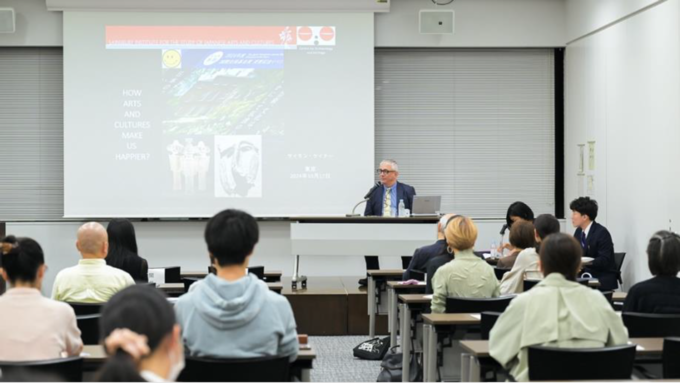
Pit Dwellings Reimagined as Contemporary Art That Uplifts Your Spirit
Now, I'd like to turn to a more academic perspective (see video 20:06-20:25]. There is an evolutionary psychologist by the name of David Buss, based at the University of Texas at Austin, who published a very interesting paper in American Psychologist in 2000. In it, he examines the notion of happiness from a cross-cultural perspective and seeks to understand the barriers to improving quality of life--or more specifically, the obstacles to enhancing happiness on a global scale. One of the ideas that particularly struck me is his argument that there is a discrepancy between modern environments and what he refers to as ancestral environments--the kinds of settings in which the people I study as an archaeologist would have lived. Now, reading academic articles such as this may not seem like the best way to improve our own happiness as scholars. I'm also not sure how many of us would consider a visit to a museum as a surefire way to boost our happiness either.
That being said, I was particularly impressed by a display at the Fukushima Prefectural Museum, whose former director, Akasaka Norio (served as director until March 2020), created a rather unique exhibition centred on a Jomon-period pit house. In one of the many fascinating conversations I've had over the past week in Tokyo, someone mentioned that Japanese people are tired of seeing reconstructed pit houses. Against this backdrop, Professor Akasaka reimagined the pit house as a work of art. He decorated it with flowers and other colourful elements woven into the roof, uplifting the spirits of everyone who saw it. On the right--though they aren't technically pit houses--are structures that resemble them. These are art installations by Chim↑Pom and other contemporary Japanese artists. I can't help but wonder if there's not some overlap here. Perhaps there's still hope for the humble pit house yet.
Digital Initiatives That Make Creative Use of Archaeological Heritage
I've always been fascinated by the creative and innovative ways that archaeological heritage gets used in Japan in the modern world [see video 22:22-24:24]. As many of you know, I have a soft spot for flame pots. In fact, we worked very closely with Professor Kobayashi Tatsuo of Kokugakuin University to try and get the Olympic cauldron for the Tokyo Olympic and Paralympic Games in 2021 in the shape of a flame pot. Unfortunately, the idea was unsuccessful. Maybe it would have been a different story if they'd built the Olympic Stadium in Niigata instead.
As I mentioned earlier, we're doing some very interesting work on digital things at the moment. This is research led by Professor Fujita Haruhiro of the Niigata University of International and Information Studies. I didn't understand the title of this paper either, although somewhat embarrassingly, I'm a coauthor. However, I've been working with Miyao Toru, one of the curators at the Niigata Prefectural Museum of History, right in the centre of flame-pot land. Professor Fujita and Miyao-san are creating 3D digital scans of flame pots. As part of their research using virtual-reality technology with students, they are working out how looking at these pots makes those students feel. Are they relaxed or tense? Or are they cheerful or gloomy? These are scales that quantify emotional changes, and there is some very interesting work underway here.
Realising the World's First "Twinned Archaeological Site" from a British Archaeology Perspective
Next, I'd like to quickly take you through a couple of projects we've been working on, which have definitely had an impact on people's well-being and sense of happiness [see video 24:15-27:46]. The overarching project we've called Global Perspectives on British Archaeology. What we've been doing is conducting research and holding exhibitions comparing British archaeological sites with their Japanese counterparts. One of the most striking exhibits was the Archeoglobe--two metres in diameter. It had to travel in a special vehicle to all the different locations where we were displaying it, making it one of the most inconvenient exhibits I've ever worked with. One of the sites we chose was a place called Grimes Graves, which is a Neolithic flint mine about five thousand years old and close to our institute in Norfolk. We established the world's first twinned archaeological site between Grimes Graves and a site called Hoshikuso in Nagano Prefecture, which is an obsidian mine. This project has led to over one hundred students from Japan and one hundred high school students from the UK making bilateral visits to each other's archaeological sites, learning archaeological English and Japanese in the process.
One thing that has struck me in particular is the number of archaeological festivals that happen in Japan. This is the Obsidian Festival that takes place each August in Nagawa-machi in Nagano Prefecture. Here in this photo I'm meeting Mayor Hata Kenichiro, who is perhaps the mayor most dedicated to Jomon in all of Japan. But again, there's a serious point here. Many of the students from England come from what we describe as chaotic family backgrounds. For them, their archaeology club is a safe place--a refuge where they can receive emotional support. Here, they organise and carry out all sorts of activities.
In contrast, the Japanese students face a different issue. They can no longer go to high school in their own town because of the rural depopulation that is happening in Japan. As the local high school has closed down, they have to move to the nearby city of Ueda in order to attend high school. Against this backdrop, Mayor Hata believes that by demonstrating the international significance of the town's archaeological heritage, those students will feel pride in their hometown and continue to take an interest in it.
To celebrate that relationship, we produced a unique artwork. Made of Norfolk flint and Nagawa obsidian, it now adorns the wall of the new town hall in Nagawa-machi. I consider it a source of great pride and happiness to both of those communities in the UK and Japan and feel it deserves to be known more widely. I would like to thank the Japanese foundations--the Toshiba International Foundation, the Nippon Foundation, the Daiwa Anglo-Japanese Foundation, the Great Britain Sasakawa Foundation, and the Japan Foundation--who have supported these kinds of grassroots connections.
Happiness Is a Cultural Construct Rather Than Being a Universal
While researching this talk, I came across the World Happiness Report [see video 27:46-29:07]. In this paper, I discovered that the United Kingdom comes in at No. 21 in the world, but Japan comes in at No. 50. So, what's that all about?
You might find some answers in the book Happiness and The Good Life in Japan, coauthored by Wolfram Manzenreiter and Barbara Holthus. It's an anthropological study of happiness here. I don't have time to go into all of that this evening, but I think it's a topic of future interest to both us in the UK and those here in Japan as well. It may well lie in the idea that happiness itself is a cultural construct rather than being a universal.
If you're not happy, perhaps it's because you're lonely. In Japan and in Germany, there have in fact been political moves to combat the issue by giving government ministers responsibility for loneliness. Even in today's newspaper, I saw that Japanese Prime Minister Shigeru Ishiba is developing ideas around introducing a new happiness index for you all.
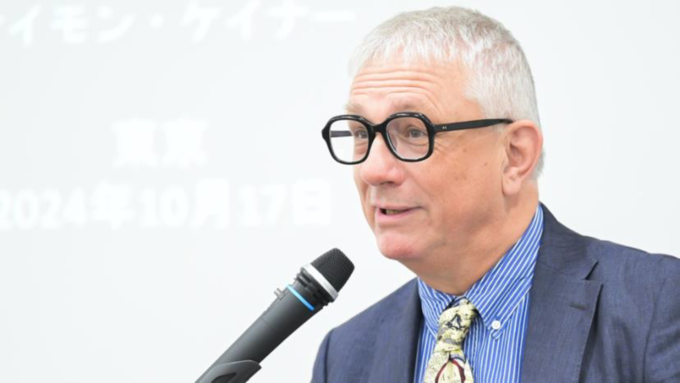
The Jomon Dogū Project: A Journey into the Hearts and Minds of the Jomon People
In the last few minutes, I would like to share a couple of other examples of projects that have brought me great happiness [see video 29:08-31:16].
It's a great pleasure to have Hiromi Uchida with us today, because Hiromi worked with us 15 years ago on projects which focused on Jomon-period dogū figures. We weren't the only people who like dogū. This is the Nobel Prize-winning Japanese author Kawabata Yasunari, who apparently wrote many of his works in the company of his favourite dogū figurine.
As part of one of the exhibitions, we tried to get people to think about Jomon people's emotions and state of mind. To encourage them in that, every visitor to the exhibition was given a small modern dogū to carry around with them while they looked at the exhibits. We know that most Jomon-period dogū were deliberately broken before being buried. Given this, we encouraged visitors to deliberately break their dogū and leave a piece of it in our conceptual archaeological trench. They had received these objects for free as part of the exhibition so we didn't mind them being broken. However, we know that less than 20 percent of all visitors broke their figurines and left a piece behind. When the museum attendants approached the people who were clearly taking their complete dogū home with them, it became apparent that they would be very unhappy if they had to break it. We felt that maybe our modern visitors had a sense of some of the emotions and sensibilities of our Jomon forebears.
As an archaeologist--and there are some archaeologists in the room--I suspect one of the moments when we are happiest is when we make interesting and exciting discoveries. We feel an indescribable joy when these things pop out of the ground for us and we're the first people to encounter them in many thousands of years.
I'm going to take you through this final part of my talk by showing you a couple of pictures [see video 31:17-34:28]. Then I want to finish with a few comments from my colleagues at the Sainsbury Institute.
These are some of the things that I've seen over the last few years working on Jomon sites that have made me smile, including the successful inscription of 17 Jomon sites in northern Japan as World Heritage in 2021. This inspired us to create our own archaeology and well-being project at a site just a short walk from my institute in Norwich. The red arrow here points to Norwich Cathedral, with the site located just in front of it. It's a Neolithic henge--our East Anglian version of Stonehenge, if you like. We called this project Archaeology for Well-Being at Arminghall Henge. We received funding from the United Kingdom's National Lottery Heritage Fund because we were working with volunteer groups, people with low mental health, and with school students.
This group is determined to visit Japan one day, so we're working to make that happen at the moment. They make very delicious cakes. The cake in this photo demonstrates the principle of stratigraphy. We also invited the volunteers to write daily diaries and draw pictures as much as possible. This picture was greatly inspired by Japanese calligraphy, although they're actually human figures gathering around the wooden henge. Over the last year, with the support of the Ishibashi Foundation and English Heritage, we've been able to put some of these ideas into practice at an exhibition at Stonehenge itself. Here, we're introducing Japanese prehistoric stone circles with our own British-designed yuru-chara.
Stonehenge attracts one and a half million visitors every year, many drawn by the belief that the site itself has healing properties. A large number of people joined us in the volunteer tent at Stonehenge to experience making Jomon-style pottery and figurines--events that sold out weeks in advance. In another world first, this is the very first flame pot to be made at Stonehenge. Thanks to the Japan Foundation, we also held a highly successful international conference on stone circles across Eurasia at a community centre in nearby Salisbury. And perhaps what I am most proud of--a further world first--is that we held a performance by Japanese taiko drummers at Stonehenge on the last day of the exhibition.
In Conclusion
Finally, I'm going to share a few photos that relate to the topic of my talk this evening [see video 32:29-35:30]. We won't worry about translating any of them--but about a week ago, I reached out to all my colleagues at the Sainsbury Institute, as well as our wide circle of former research fellows around the world. I asked them to select one picture that, for them, best sums up what makes them happy about working with Japanese arts and cultures and to provide 10 words to accompany it. While some of the academics wrote far more than 10 words, my professional colleagues did a great job boiling them down. I'd like to share a taste of these as a collective message from all my colleagues at the Sainsbury Institute to you and to express our gratitude to the Japan Foundation for the tremendous honour you have bestowed upon us in this our 25th anniversary year.
I'd also just say something about this particular slide [see video 35:31-37:22] because the photo is one of my personal favourites. In May this year, we had the most extraordinary week--quite possibly the best week we've ever had in the Sainsbury Institute--when 12 priests from Hasedera Temple in Sakurai City, Nara, joined us in Norwich. This remarkable visit was made possible thanks to an introduction from Dr. Tateishi Toru, who's with us today, and Mr. Kobayashi Hideto, one of the priests from Hasedera. These priests in this photo specialise in chanting Buddhist texts, or oshomyo. They also brought with them a replica of the largest scroll painting in Japan--an impressive 12 metres high. Our original plan was to display it in Norwich Cathedral, but for reasons still unclear, the bishop wasn't entirely convinced it was the right setting. So instead, we displayed it in Norwich City Library, which turned out to be a great choice. Several thousand people came to see the scroll and hear the priests chant. And if I may add, there was one very happy vicar in this church--the largest city church we have--where we held a concert featuring oshomyo chanting and medieval Norwich plainsong. The people in red are the Norwich Choir, and those in the splendid robes are our friends from Hasedera. Two hundred people attended the performance. The vicar told me he couldn't recall there ever being more than a hundred people in that church.
Here are just a few more photos and messages [see video 37:23-37:43], which we will be putting on the official website of the Sainsbury Institute as a token of gratitude to the Japan Foundation for this wonderful week. I would also like to say that the visit by the Hasedera priests was facilitated by a very generous grant from the Japan Foundation and also from the Great Britain Sasakawa Foundation. I loved the fact that even a bar of soap could be the object chosen by one of our most distinguished previous fellows [see video 37:44-37:59] to express their happiness in engaging with Japanese culture.
For example, through this program--our Japan Orientation Program--we worked with the Toshiba International Foundation and the Japan Foundation, in particular through their Budapest Office. This allowed us to bring in many students who otherwise might never have been exposed to some of the slightly bonkers ideas we have in Norwich. So, I'd like to end by thanking all of our supporters.
And I'd love to know which ones you think are happiest--is it the haniwa or the dogū?
Thank you very much indeed for your attention.
----------------------------------------------------------------------------------------------
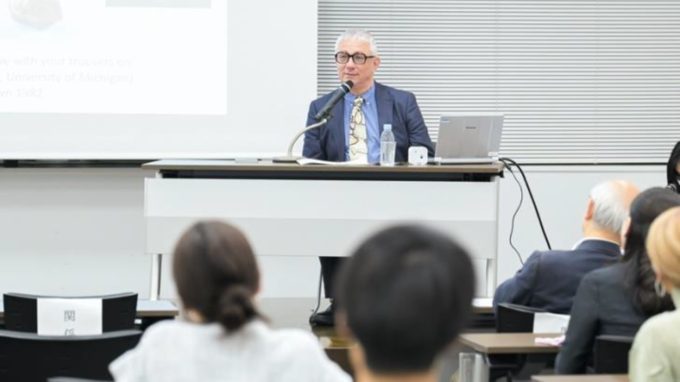
【Q&A Session】
Q: Which do you think is happier, the haniwa or the dogū?
A (Prof. Kaner): That's a very difficult question. I think both can be seen as happy. But to be honest, while many people describe dogū as cute, I actually find them a bit frightening. If we're talking about something that's truly happy, I'd say it's probably the haniwa.
Q: What attracted you to Japan 40 years ago?
A (Prof. Kaner): At the time, I was an archaeology student at the University of Cambridge, where I met Professor Gina Barnes, who specialised in Japanese archaeology. I took her course and was interested in what she taught.
During the spring holidays of my third year of university--just before my final exams--I travelled to Japan with her and two or three students for about four weeks. Her research project focused on locating traces of Yayoi-period agricultural fields in the Nara Basin, so we carried out soil sampling surveys.
Those two weeks in March in Nara were a bit chilly, but toward the end of the trip, the cherry trees began to bloom, and we even managed to enjoy a bit of hanami.
I also had the chance to visit several Japanese museums and meet professionals working in Japanese archaeology--my first real encounter with the field in Japan. In the two years prior to my trip, I'd only seen photographs, slides, and some rather old books, so seeing the actual artifacts was truly fascinating.
Not long after, I had another wonderful opportunity. Before the current Japan Exchange and Teaching (JET) Programme existed, there was a predecessor called the British English Teachers (BET) program. When I returned to the UK, I took the exam to join BET. I have to admit, I didn't do particularly well, but I applied anyway--and was fortunate enough to be accepted.
I spent two years in Tamba Sasayama, Hyogo Prefecture, where I taught English at a high school. It was a fantastic experience.
In the beginning, I didn't have a concrete plan. Things simply unfolded--one opportunity leading to the next. That's how I came to learn about Japan, step by step.
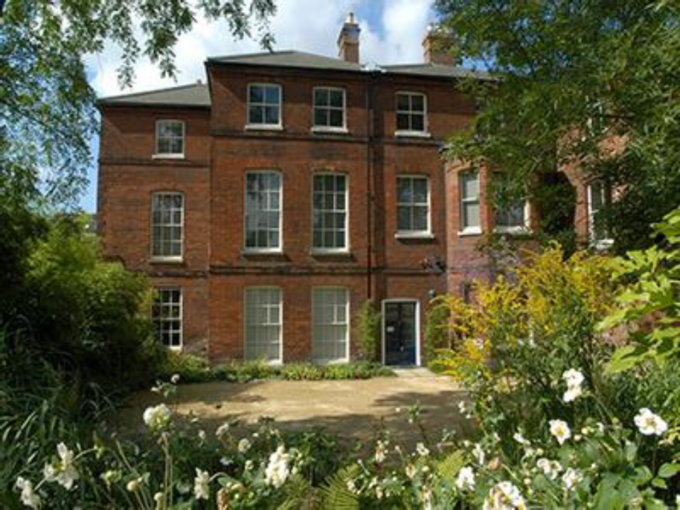
【About the Sainsbury Institute for the Study of Japanese Arts and Cultures】
The Sainsbury Institute for the Study of Japanese Arts and Cultures (SISJAC) was founded in 1999 through the generosity of Sir Robert and Lady Lisa Sainsbury as a research organisation dedicated to the study, publication, and exchange of Japanese arts and cultures. Since its founding, the Institute has evolved as one of the largest research institutions in Europe for promoting this field. To date, the Sainsbury Institute has hosted over 90 research fellows and visiting scholars from Japan and around the world. It organises and hosts a series of programmes engaging young scholars in residential programmes in Norwich each year, and continues to digitise the library's collection of over 50,000 historical records. In recent years, the Institute has shown flexibility in expanding its research scope to include areas such as archaeology, manga, and anime. Looking ahead, it is expected to remain a leading center for Japanese studies in Europe.
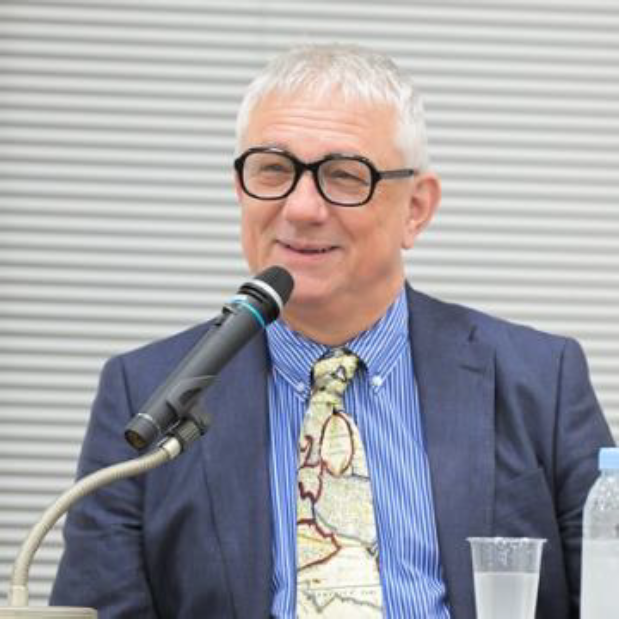
Professor. Simon Kaner【Executive Director, Sainsbury Institute for the Study of Japanese Arts and Cultures (SISJAC)】
Prof. Kaner specialises in archaeology and earned his PhD from the University of Cambridge. Having attended graduate school at Kyoto University, his research focuses on Jomon pottery, and he has been instrumental in promoting Jomon culture internationally. Prof. Kaner currently serves as Head of the Centre for Archaeology and Heritage at the Sainsbury Institute and is the founding director of the Centre for Japanese Studies at the University of East Anglia. He received the Foreign Minister's Commendation in 2024 and was awarded the Miyazaka Eiichi Togariishi Jomon Prize in 2011.
Related Articles
Keywords
Back Issues
- 2025.9.30 The 51st Japan Found…
- 2025.9.30 The Japan Foundation…
- 2025.9.30 Bringing the World C…
- 2025.9.30 The 51st (2024) Japa…
- 2025.9.30 Japan Foundation Pri…
- 2025.9.30 Japan Foundation Pri…
- 2024.5.24 The 50th Japan Found…
- 2024.3. 4 Movie Theaters aroun…
- 2023.4.10 The 49th Japan Found…
- 2023.3.28 JF's Initiatives for…

